Mastering Chromecast Control: Your Ultimate Guide


Intro
Chromecast has made waves in the realm of digital streaming, offering users a means to convert their standard television experience into a smart one. With a simple tap on a smartphone or tablet, a world of entertainment lies before you. Whether you're streaming movies, playing games, or checking out videos from YouTube, mastering Chromecast ensures you make the most of your viewing experience. This guide aims not only to demystify its operation but also to elevate your grasp of this cutting-edge technology.
Navigating through the multitude of features and optimizing your Chromecast setup can sometimes feel like trying to hit a moving target. From configuration intricacies to understanding remote controls and voice commands, there are layers of functionality waiting to be uncovered.
So, who’s this guide meant for? Tech enthusiasts and everyday users alike can benefit. If you own an Android device, the insights provided will streamline your digital consumption, ensuring that great content never eludes you.
Let's dive into the bare bones with a Product Overview.
Prelude to Chromecast
Understanding Chromecast is foundational to harnessing its full potential. This remarkable device has revolutionized how we consume media, making it easier and more efficient to stream content right to our televisions from various sources. With the proliferation of digital platforms, the ability to control and manage streaming content has become a critical skill for users. The next few sections will delve deeply into this topic, where we'll cover everything from defining what Chromecast is, to exploring its standout features and the different varieties available on the market.
The significance of this segment lies in setting the stage for everything that follows. By getting a solid grasp on the basics, users position themselves to take advantage of the advanced functionalities discussed later in the article. It's not just about watching shows; it's about managing an experience that can enhance your digital entertainment.
What is Chromecast?
Chromecast is a streaming media device developed by Google, designed to facilitate the wireless casting of audio and video content to a television. At its core, it operates by connecting to your home Wi-Fi network and allowing compatible devices, like smartphones or laptops, to stream content directly to your TV. It transforms any standard television into a smart device, provided the TV has an HDMI port.
For instance, one could be watching a movie on Netflix on their mobile device, and with a simple tap, that movie can be mirrored onto a bigger screen. It serves as a conduit for users to access platforms like YouTube, Spotify, and many others, expanding the entertainment landscape significantly.
Key Features of Chromecast
Chromecast offers several key features that make it stand out in the crowded field of streaming devices:
- Versatile Compatibility: Chromecast isn’t limited to just Google products. It works seamlessly with Android, iOS, Windows, and Mac devices, allowing for a wider range of user interaction.
- Casting & Mirroring: Users can either cast content from supported apps or mirror their entire device screen, important for presentations or sharing personal content.
- Voice Control Integration: Compatible with Google Assistant, users can control playback with simple voice commands. This feature can make finding content or adjusting settings hands-free.
- Group Casting: Chromecast can sync multiple devices, so friends can collectively contribute to playlists or share videos, enhancing group viewing experiences.
- Guest Mode: This option allows visitors to cast to your TV without needing access to your Wi-Fi password, making it easy for friends and family to join in on the fun.
These features not only increase customer satisfaction but also broaden the appeal of Chromecast among different demographic groups.
Types of Chromecast Devices
There are several types of Chromecast devices available, catering to varying user needs and preferences:
- Chromecast (Standard): This is the basic model, perfect for those who want to get started with streaming without a bunch of frills.
- Chromecast Ultra: Supporting 4K streaming, the Ultra is geared towards enthusiastic viewers who crave the utmost clarity in their content.
- Chromecast with Google TV: This model comes with an integrated user interface and remote control, making it much easier for users to navigate without needing a smartphone. It offers personalized recommendations and access to streaming services right from the device itself.
In essence, selecting the right type of Chromecast hinges on your streaming habits and what features resonate with your viewing style. Each model brings something unique to the table, ultimately enhancing the user's experience.
Setting Up Your Chromecast
Setting up your Chromecast is a crucial first step that lays the groundwork for an enjoyable streaming experience. It's not just a mere plug-and-play; it demands attention to detail and an understanding of what you aim to achieve with this nifty device. The initial setup process can often feel like a rite of passage for new users, and getting it right sets the stage for seamless interaction with your favorite streaming services and content. Without the correct configuration, you'll find yourself tussling with connectivity issues and frustrating delays. Hence, this section will demystify the setup process, ensuring that you quickly become a Chromecast pro.
Initial Installation Process
When setting up your Chromecast, the first thing you need to do is connect it to your TV's HDMI port. This seems simple enough, but there’s a bit more to it than just plugging it in. Ensure that your television is turned on and switched to the correct input source. If you're unsure about the input channels, often labeled as HDMI 1, HDMI 2, etc., take a quick glance at your remote control.
- Power Source: Once you've got the device connected, you’ll want to plug it into a power outlet using the included power adapter. Some folks might try connecting it directly to the TV via USB, but that usually doesn’t provide sufficient power. Best to stick with the wall outlet.
Next, while your TV is still set on the appropriate HDMI channel, look for a setup screen that will guide you through the next steps. Most Chromecast devices will prompt you to download the Google Home app during this phase, which is indispensable for managing your device.
Connecting to Wi-Fi
Your Chromecast's ability to stream content hinges on a strong Wi-Fi signal. Once the Chromecast is connected and powered on, it will search for available Wi-Fi networks. Here, you want to make sure your smartphone or tablet is on the same network you wish to connect the Chromecast to.
- Open the Google Home app on your device and search for new devices. After a few moments, the app should display your Chromecast.
- Select your device and proceed through prompts that require you to confirm a code is visible on both your phone and your TV.
- Finally, choose your home Wi-Fi network and enter the password.
Once you've successfully connected your Chromecast to Wi-Fi, it might take a moment or two for the device to establish the connection fully. Keeping your Wi-Fi signal strong is important to prevent buffering issues later on.
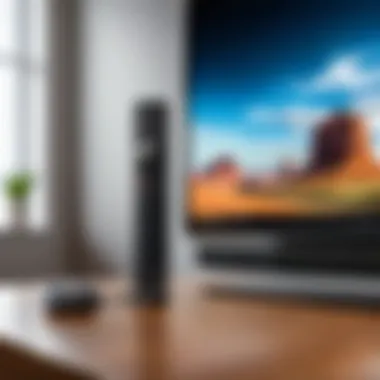

Using the Google Home App for Setup
The Google Home app isn’t just a nice-to-have; it’s your main tool for everything Chromecast-related. This app centralizes your control over settings, device management, and even troubleshooting. Here's how to utilize it effectively:
- Launch the Google Home app after connecting your Chromecast to Wi-Fi.
- You’ll notice options for linking other apps and accounts—adding services like Netflix or YouTube is as simple as pushing a button. The app also helps you customize cast settings to align with your preferences.
- If you ever need to adjust your Chromecast settings or troubleshoot issues down the line, accessing these features through the app is straightforward.
By utilizing the Google Home app, not only do you gain control, but you also allow for future integrations that can enhance your overall experience. Remember, setting up your Chromecast might seem like an ordinary task, but two key things to takeaway are patience and attention to detail. The effort you invest initially yields dividends in how well you enjoy streaming your favorite shows and movies.
How to Control Chromecast
Controlling a Chromecast device effectively is crucial for enhancing your viewing experience. This section outlines methods and insights that allow you to interact with your Chromecast seamlessly, ensuring you don’t miss a beat while watching your favorite content. From smartphones to voice commands, the convenience offered by these control methods cater to diverse user preferences and situations. Let's dive into the details of each control mechanism and their benefits.
Controlling via Smartphone
Using your smartphone to control Chromecast is like having a magic wand for your TV. This method gives you instant access to an array of features without having to juggle multiple remotes. With the Google Home app, you can easily navigate different streaming platforms, manage playback, and even adjust volume levels with a swipe or a tap.
- Installation of Google Home App: Make sure to install the Google Home app from the Google Play Store or the Apple App Store. This app acts as the control center, where you can manage all aspects of your Chromecast.
- Casting Content: While browsing through apps like Netflix or YouTube, simply look for the cast icon. Tapping on it will allow you to send the content directly to your Chromecast. This fluidity makes it effortless to switch between devices without missing a moment of your show.
- Playback Controls: Your smartphone becomes a remote control. You can easily pause, play, rewind, and fast forward. It’s almost like having a personalized remote that fits snugly in your pocket. Not a bad deal, eh?
Utilizing Voice Commands
If you’re in a lazy Sunday mood and don’t want to lift a finger, voice commands come to the rescue. Using Google Assistant, you can interact with Chromecast using just your voice. This is particularly handy when your hands are too full of popcorn.
- Hey Google, Play my playlist: This command can fire up your favorite music on devices supported by Chromecast, setting the ambiance without breaking a sweat.
- Control Playback: You can even say things like, "Pause the movie" or "Skip to the next episode," achieving a hands-free experience that feels futuristic.
- Limitations: One aspect to keep in mind is that not all apps support voice commands. However, the major streaming services, like YouTube and Netflix, mostly offer this feature.
"Voice control with Chromecast can transform how you enjoy your content, offering a futuristic feel to a simple viewing experience."
Using Chromecast with a Remote
Some users prefer the tactile feel of a physical remote, and Chromecast accommodates this quite well. The Chromecast with Google TV model comes with its own remote control, catering to those who enjoy a more traditional approach.
- Navigation: The remote offers a simple layout. You can scroll through channels, highlight shows, and browse apps with ease. It has dedicated buttons for popular streaming services, making it a functionality-rich device.
- Voice Remote: This remote isn’t just old school; it’s smart too. With built-in Google Assistant, you can still ask it to search for movies, check the weather, or adjust settings—all without needing your phone. Just press the Assistant button and speak your mind.
- Battery Life: Something to keep an eye on is battery life. Most remotes use AAA batteries, which may need changing from time to time. But don't worry—sometimes it's as simple as switching out a couple of cells.
Exploring different methods of controlling your Chromecast reveals layers of convenience in everyday usage. Whether you prefer the ease of a smartphone, the novelty of voice commands, or the straightforwardness of a remote, your streaming experience becomes far more engaging and enriched.
Streaming Content on Chromecast
Streaming content on Chromecast has become an essential aspect of how users engage with digital media. With the rapid growth of online streaming platforms, it’s vital to understand how Chromecast fits into this dynamic landscape. This section will break down the significance of streaming content on Chromecast, highlighting its user-friendly nature and versatility. More importantly, it will explore how this technology elevates everyday viewing experiences.
Supported Streaming Services
One of the most appealing features of Chromecast is its compatibility with a plethora of streaming services. Users can access platforms like Netflix, Hulu, Disney+, and YouTube only with a few clicks. Each service comes with its unique offerings, making it pretty handy to hop from one type of content to another. Here’s a brief overview of some well-known streaming services:
- Netflix: A giant in the streaming world, known for its vast library of movies, TV shows, and its own original content.
- Hulu: Offers a mix of current television episodes, movies, and Hulu Originals, appealing to a diverse audience.
- Disney+: Perfect for families and fans of Disney content, it houses iconic films and recent Marvel and Star Wars entries.
- YouTube: The go-to platform for user-generated content, tutorials, music videos, and more.
- Spotify: Although primarily a music platform, casting Spotify's music to your TV can enhance your party setup or casual listening experience.
The ability to access these services simplifies streaming and keeps interruptions at bay. Users can simply use their mobile devices to find something to watch and cast it to their big screen effortlessly. Beyond these options, there’s a continuously growing list of services that support Chromecast, reflecting its adaptability.
Casting from Various Devices
Chromecast allows users to cast from multiple devices effortlessly, making it a versatile tool in streamlining entertainment. Whether you’re using a smartphone, tablet, or even a laptop, the options are plentiful. The ease of casting brings a distinctive value to the user experience. Imagine you’re watching a cooking tutorial on your tablet; instantly, you can beam that up to your TV to follow along with more screen real estate.
Steps to Cast from Different Devices:
- Mobile Devices:
- PC or Mac:
- Screens from Other Devices: If other smart devices or apps have Chromecast integration, users can cast from there too, ensuring a very connected experience.
- Open a Chromecast-compatible app (like Netflix or Spotify).
- Tap the Cast icon (a rectangle with Wi-Fi-like waves).
- Select your Chromecast device.
- Choose content and start streaming.
- Open Google Chrome and ensure it's updated.
- Click on the three-dot menu in the top right corner.
- Select 'Cast' and choose your Chromecast device from the list.
- You can cast any browser tab or your entire desktop.
The flexibility of casting from devices creates an almost effortless interaction with Chromecast, blending convenience with high functionality. The advancements in streaming technology, coupled with the innate capabilities of Chromecast, resonate well with tech-savvy individuals who enjoy a seamless entertainment journey.
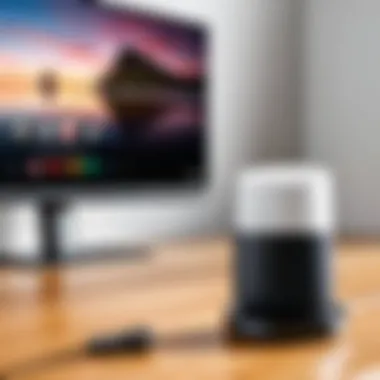
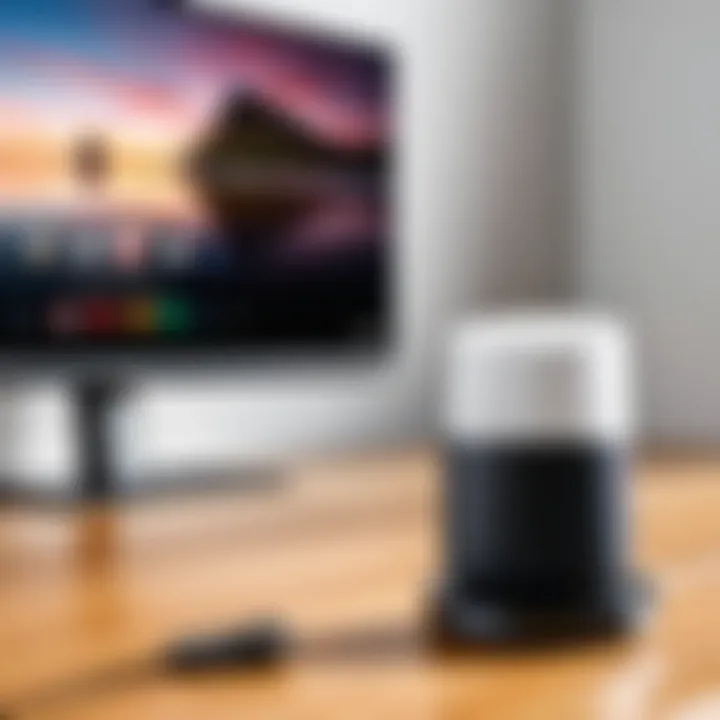
Advanced Chromecast Features
The Advanced Chromecast Features section delves into elements that truly elevate the Chromecast experience. These capabilities not only enhance usability but also broaden the scope of what users can do with their device.
Using Guest Mode
Guest Mode is a nifty feature that simplifies the sharing of your Chromecast with those who visit your home. Often, friends or family might want to cast their favorite show without needing to log into your Wi-Fi network. With Guest Mode, they can do just that.
To enable it, open the Google Home app, select your Chromecast device, and toggle the Guest Mode switch. A unique four-digit PIN will be created that guests can use to connect their devices. This not only preserves your network’s security but also streamlines the entire casting process.
"Guest Mode makes it easy for visitors to cast their content without fussing over passwords or network settings."
Screen Mirroring Capabilities
Screen mirroring is another powerful feature that can be utilized to display what’s happening on a mobile device or computer on a big screen. Imagine showing off photos from your recent vacation or presenting work documents to colleagues during a meeting.
To utilize this feature, simply navigate to the Google Home app and select the option to cast your screen. The process is fairly straightforward, and once connected, everything visible on your device will be mirrored. It's an efficient way to share content in real-time, which can significantly enhance collaboration or entertainment experience.
Integrating Other Smart Devices
The integration of Chromecast with other smart devices highlights its role within the modern smart home ecosystem. A user can control Chromecast using Google Assistant through devices like Google Nest Hub.
Imagine saying, "Hey Google, play my movie on the living room TV," and voila—your Chromecast springs to life without you lifting a finger. Also, if you have smart lights or a thermometer synced up, you can adjust the ambiance while your movie begins. This seamless integration enhances the user experience, making everyday tasks more convenient.
Overall, the advancements in Chromecast capabilities provide countless possibilities. By understanding and leveraging these features, users can significantly enhance their entertainment experience, while also simplifying the way they interact with their smart devices.
Troubleshooting Common Issues
Troubleshooting is one of the most vital aspects when it comes to managing your Chromecast effectively. It serves as a toolkit, a lifeline if you will, allowing users to navigate the inevitable bumps along the road of smooth streaming. When things go awry, knowing how to handle specific problems can save you time and frustration. Essentially, troubleshooting enhances the Chromecast experience, ensuring that tech-savvy users can maximize their device’s potential and maintain seamless entertainment.
Connection Problems
Connection issues are often the first hiccup users encounter while using Chromecast. The comfort of connecting your device to Wi-Fi should not become a chore. However, several factors may disrupt this process:
- Wi-Fi Signal: A weak signal can impede the Chromecast’s ability to connect. If your router is too far away or there are obstacles in the way, this could be causing the trouble.
- Network Congestion: Imagine a cramped highway during rush hour—this is what happens when too many devices are connected to the same network. Ensuring fewer devices share the Wi-Fi can help.
- Router Configuration: Some routers have settings that may inadvertently block Chromecast. Temporary adjustments to firewall settings could make a difference.
To rectify these issues, first verify your Wi-Fi connection by connecting another device to see if the problem persists. If that's the case, reboot the router and your Chromecast. Sometimes, all devices need is a little reset to get back to business. Don't forget to check if there are updates available for the Google Home app, as keeping your software current can prevent connection hassles.
Audio/Video Sync Issues
Another notorious problem that users frequently face is the dreaded audio/video sync issue. Picture this: you’re enjoying your favorite show, but the dialogue is out of whack with the visuals. This can throw you off and diminish your viewing pleasure. Here are some common culprits:
- Streaming Service Problems: Sometimes, the issue doesn't lie with your Chromecast, but rather with the streaming service you’re using.
- Network Lag: Similar to connection problems, lagging networks can disrupt the flow of audio and video.
- Hardware Compatibility: Ensure the devices you’re using are fully compatible with Chromecast. Even minor discrepancies can lead to sync issues.
Addressing this problem can require a few different approaches. First, double-check if the streaming service you’re using has any known issues reported by users. Additionally, try pausing the video for a few seconds and then playing it again. This simple action can often resynchronize the audio with the video. If all else fails, restarting the Chromecast may just be the magic touch needed to restore harmony.
Resolving App-Specific Errors
Apps can be fickle creatures, and it's not uncommon for users to face app-specific errors. Whether an app is crashing, failing to load, or displaying error messages, these problems can be a headache. Some common reasons for these issues include:
- Outdated Applications: Ensure that the apps installed on your device are up-to-date. Old versions may not function properly with the latest Chromecast updates.
- Storage Issues: If your device is running low on storage, it could prevent apps from operating efficiently. Clear up some space if necessary.
- Corrupted Data: Occasionally, residual files from an app can corrupt future functionality.
To tackle these errors straightforwardly, start by updating all relevant apps. If an app refuses to cooperate after updating, consider uninstalling and reinstalling it. This process can clear any bugs or glitches that may have nested in the app's framework. For particularly stubborn issues, visiting forums or support pages for the app in question can provide additional insights and fixes.
"Trial and error is part of the process when managing any technology. Don't hesitate to step off the beaten path to discover what works best!"
Navigating through these troubleshooting steps not only enhances the Chromecast experience but also empowers you as a tech-savvy user to take control of your digital entertainment. Remember, a little patience and persistence can go a long way in resolving most of these common issues.
Keeping Chromecast Updated
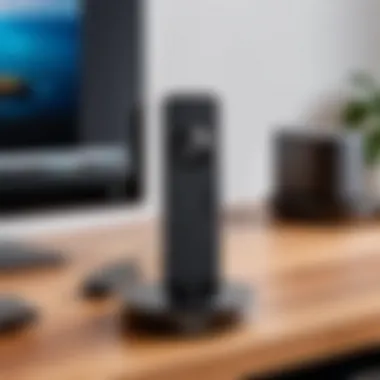
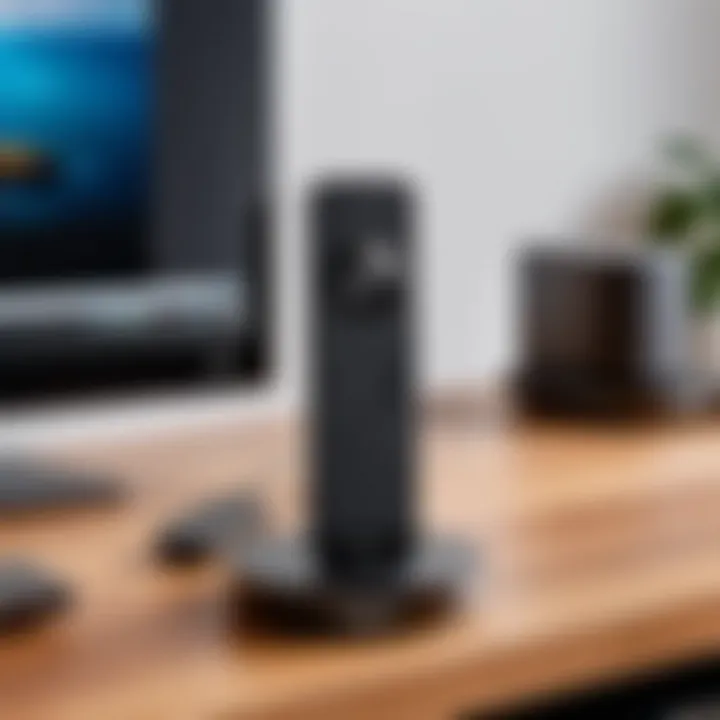
Keeping your Chromecast up to date is not just a good habit; it's essential for ensuring that your streaming experience stays as smooth as butter. An outdated device may run into performance issues, face compatibility problems with the latest apps, or lack newfound features that can significantly enhance your usage. So, let’s dive into the nitty-gritty of keeping your Chromecast updated.
Checking for Software Updates
Before you can enjoy the latest features or fixes, you need to make sure you're running the latest software. Checking for updates is a fairly simple process. Here’s how:
- Open the Google Home App: Launch the Google Home app on your smartphone or tablet. This app acts as the command center for your Chromecast.
- Select Your Chromecast Device: Tap on the device you want to check. You should see the device's settings, surrounded by a colorful display.
- Access Device Settings: Head to the settings gear icon located in the top right corner of the screen.
- Check for Updates: Scroll down until you find the "System update" option. If there's an update available, it’ll notify you here.
The update process usually happens in the background. Just keep your Chromecast plugged in and connected; it’ll update automatically during periods of inactivity.
Remember: Regularly checking for updates not only optimizes performance but also ensures security patches are applied, helping keep your device and personal data safe.
Importance of Firmware Maintenance
Firmware refers to the software that's embedded into your Chromecast hardware. Think of it as the brain inside your streaming device. Maintaining it is vitally important for several reasons:
- Performance: Just like any tech, a smoothly running firmware will make your Chromecast respond faster to commands and stream with fewer hiccups.
- Compatibility: Updating the firmware ensures that you can use all the latest features offered by both Chromecast and the apps. Outdated firmware could lead to issues in casting or using new functionalities that are rolled out by developers.
- Security: With the increasing number of cyber threats, keeping the firmware updated helps protect your device from vulnerabilities that could be exploited by third parties.
Future Developments in Chromecast Technology
As technology keeps racing ahead, Chromecast finds itself in the middle of an ongoing evolution. It’s not just about casting your favorite show or movie anymore; developments in this sphere indicate that Chromecast is poised to offer even more integrated features in the near future. Staying updated with these advancements is pivotal for users looking to enhance their viewing experiences. Understanding the implications of these emerging trends can lead to smarter purchases and better device utilization.
Predicted Innovations
The landscape of streaming is constantly changing, and Chromecast will likely follow suit. Here are some anticipated innovations:
- Enhanced Connectivity: Future versions may embrace Wi-Fi 6 technology, improving connectivity speed and minimizing lag times. This means smoother streaming, especially in households with multiple devices competing for attention.
- Increased Compatibility: As more smart devices enter the market, Chromecast could continue expanding its compatibility. Imagine controlling every smart appliance in your house through your Chromecast with simple voice commands.
- Augmented Reality Features: Newer models might introduce augmented reality capabilities, allowing users to experience their content in a more immersive way. The idea of layering AR visuals over your TV shows could redefine entertainment.
"Much like the evolution of smartphones, the next wave of Chromecast technology is about reimagining what is possible in connectivity and interaction."
- Enhanced UI Experience: A more intuitive user interface, possibly integrating machine learning, could tailor content recommendations to intricately suit personal user preferences. Picture a device that learns your preferences with every use and suggests content accordingly.
In short, the Chromecast of the future could offer users a more personalized and cohesive viewing experience.
Role of Chromecast in Smart Homes
The integration of Chromecast within the smart home ecosystem is set to be a game-changer. Here’s how it plays a significant role:
- Centralized Control: Chromecast can easily merge with your other smart devices, acting as a hub for control. Users can dim the lights, adjust the thermostat, and start streaming all from a single interface.
- Voice Activation: Utilizing Google Assistant, users can control not just the Chromecast but other smart devices in their homes using voice commands. For example, saying, "Hey Google, play my favorite playlist on the living room TV," will not only start your music but can also adjust the lighting or temperature in the room to set the mood.
- Automated Routines: As smart home systems grow, Chromecast could fit into custom routines. Setting a 'movie night' command could automatically dim the lights, adjust the temperature, and launch your favorite streaming service—all in one go.
- Inter-device Communication: Future Chromecast devices may enable smoother inter-device communication, allowing various devices in your home to work together seamlessly. This would create an environment where everything from your TV to your refrigerator could interact more intelligently.
In essence, Chromecast’s role in smart homes isn’t just supplementary; it’s foundational for creating a truly interconnected living experience.
Culmination
The conclusion of this comprehensive guide on Chromecast control stresses the importance of understanding the wide range of functionalities that these devices offer. By mastering the various ways to control and optimize Chromecast, users can transform their viewing experiences from mundane to truly engaging.
Casting movies, music, and games becomes more than just a mere action; it turns into a seamless experience when one is aware of features like voice command integration, device compatibility, and troubleshooting methods. This is not just about watching content; it's about enhancing the digital lifestyle. The benefits of effectively managing your Chromecast are significant. Not only can you enjoy high-quality streamed media, but you gain control over what, when, and how you watch things, making it easier to share experiences with friends and family.
When you dig deeper into features such as Guest Mode, screen mirroring, and integration with smart home devices, the potential for a tailored experience shows itself. Especially for tech-savvy users and Android enthusiasts, every tip and trick shared throughout this article lays the groundwork for a richer, more interactive way to consume entertainment.
"A little knowledge can go a long way, especially when it comes to managing your media devices."
Ultimately, as new developments arise in Chromecast technology, staying informed and adept at utilizing these advancements will only enrich your viewing habits. The culmination of this guide serves as a reminder — there always lies more beneath the surface of a simple device than meets the eye.
Recap of Key Points
- Understanding the features of Chromecast enhances usability.
- Control methods like smartphone commands and voice control deepen engagement.
- Troubleshooting guides ensure a smooth streaming experience, minimizing disruptions.
- Features like Guest Mode and screen mirroring add dimensions to usability.
- Staying updated with device advancements and updates is typically beneficial for optimal performance.
Final Thoughts on Chromecast Usage
With the rapid evolution of streaming technology, embracing Chromecast means you are stepping into a realm of infinite possibilities. The journey begins with setup — a simple process that opens the door to extensive content streaming. Moreover, the versatility found in casting from various devices simplifies everything from binge-watching shows to enjoying gaming sessions.
Utilizing voice commands further elevates the experience, making operations hands-free and convenient. It's almost like conversing with your TV. Moreover, as you implement troubleshooting techniques, they prove invaluable in addressing unexpected glitches or issues that could sour the experience.
In essence, the world of Chromecast technology invites you not only to consume content but to actively engage and personalize how you experience it. For Android users and tech enthusiasts alike, knowing the ins and outs means turning your device into a seamless companion in your entertainment arsenal.







